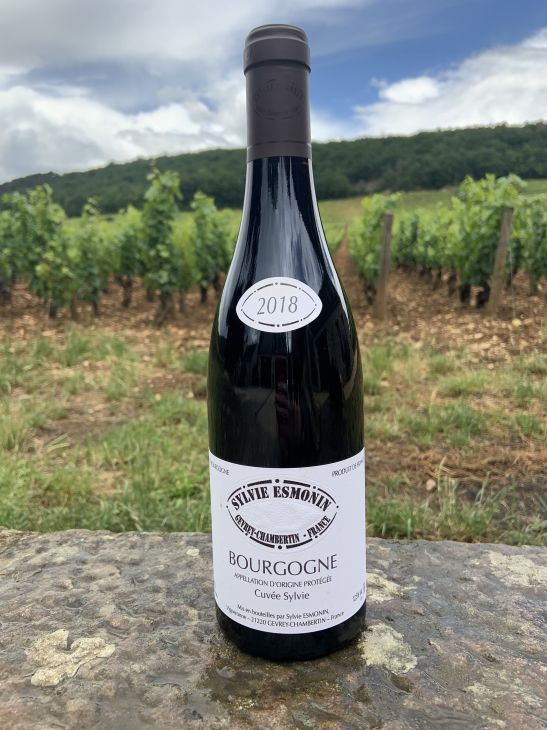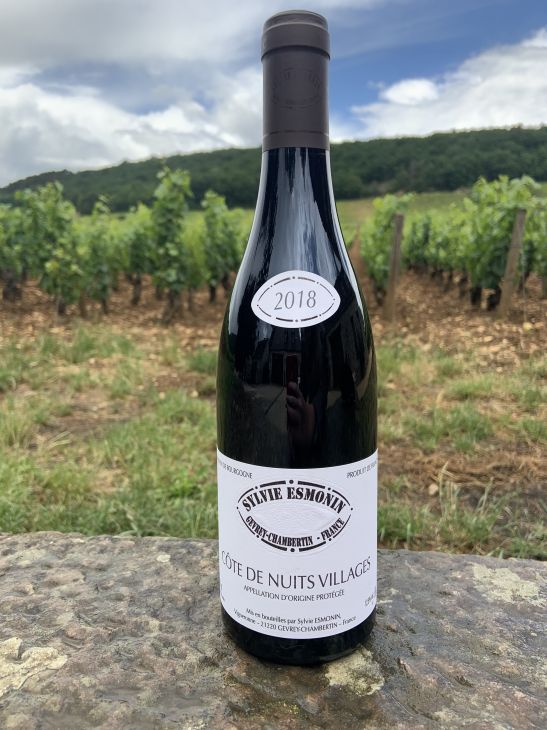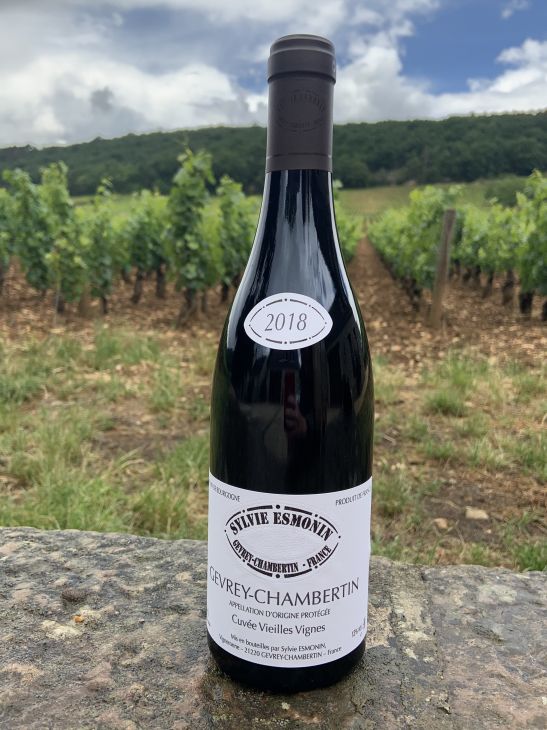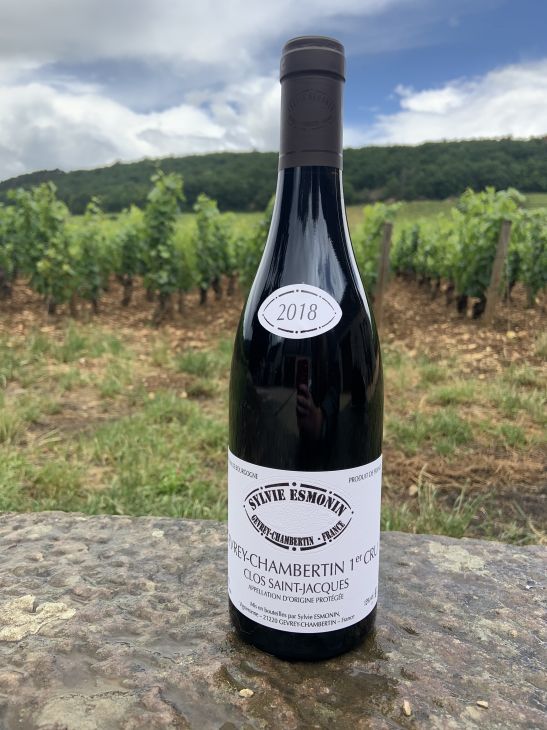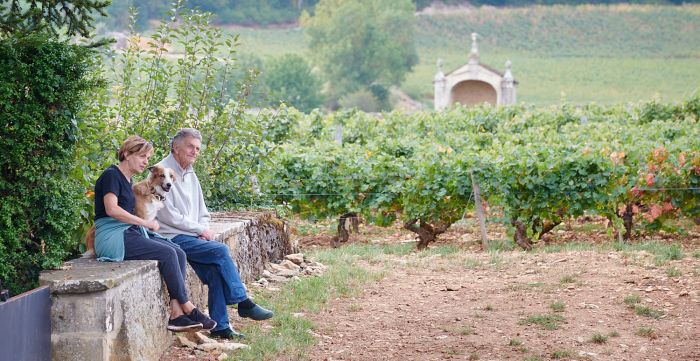
producer profile
02.12.2019
Sylvie Esmonin Producer Profile
<p>Prior to Sylvie Esmonin heading her eponymous <span class="zalup"><span><glossary title="427">estate</glossary><span>,</span></span></span> it was known as<strong> </strong>Domaine Michel Esmonin et Fille. After studying in <span class="zalup"><span><glossary title="391">Dijon</glossary><span>,</span></span></span> Sylvie worked in various capacities as a consulting <span class="zalup"><span><glossary title="422">oenologist</glossary><span>.</span></span></span> She says that she needed several years of independent work to weigh her decision and commitment to come back to <glossary title="489">Gevrey-Chambertin</glossary> and succeed her father at the family <span class="zalup"><span><glossary title="427">estate</glossary><span>.</span></span></span> She came back to <glossary title="1104">vinify</glossary> the 1990 <span class="zalup"><span><glossary title="1109">vintage</glossary><span>,</span></span></span> and from then on the whole production became <glossary title="428">estate </glossary><glossary title="185">bottled</glossary>. Otherwise, all decisions were made by father and daughter together, until progressively Sylvie assumed all responsibilities (with the possible exception of <span class="zalup"><span><glossary title="810">plowing</glossary><span>,</span></span></span> Michel Esmonin’s favorite vineyard chore).</p>
<p>The <glossary title="427">estate</glossary> consists of 7.8 <span class="zalup"><span><glossary title="523">hectares</glossary><span>,</span></span></span> half owned, half rented: 80 <glossary title="1208">ares</glossary> of <span class="zalup"><span><glossary title="1183">Bourgogne Rouge</glossary><span>,</span></span></span> 60 <glossary title="1208">ares</glossary> in <span class="zalup"><span><glossary title="370">Côtes-de-Nuits</glossary><span>,</span></span></span> 10 <glossary title="1208">ares</glossary> of <span class="zalup"><span><glossary title="188">Bourgogne Aligoté</glossary><span>,</span></span></span> 20 <glossary title="1208">ares</glossary> of <span class="zalup"><span><glossary title="1183">Bourgogne Blanc</glossary><span>,</span></span></span> 20 <glossary title="1208">ares</glossary> in <span class="zalup"><span><glossary title="1118">Volnay-Santenots</glossary><span>,</span></span></span> 1.7 <glossary title="523">hectares</glossary> of the <glossary title="824">1er cru</glossary> <glossary title="825">Clos-Saint-Jacques</glossary> and 4.4 <glossary title="523">hectares</glossary> in <span class="zalup"><span><glossary title="489">Gevrey-Chambertin</glossary><span>.</span></span></span> The average age of the vines is high, most were planted by Sylvie’s grandfather and some by her father. The <span class="zalup"><span><glossary title="825">Clos-Saint-Jacques</glossary><span>,</span></span></span> considered a <glossary title="501">Grand Cru</glossary> in everything but name, is planted right behind Sylvie's house and is essentially her backyard.</p>
<p>The winery is a large facility, with a beautiful stone <glossary title="254">cellar</glossary> underneath. All grapes are <span class="zalup"><span><glossary title="378">destemmed</glossary><span>,</span></span></span> <glossary title="827">crushed</glossary> and <glossary title="441">fermented</glossary> in open <glossary title="1126">wood</glossary> <span class="zalup"><span><glossary title="1140">vats</glossary><span>,</span></span></span> then put in <glossary title="142">barrels</glossary> for the <glossary title="938">secondary fermentation</glossary> and <span class="zalup"><span><glossary title="74">aging</glossary><span>.</span></span></span> The <glossary title="142">barrels</glossary> are of various ages to accommodate each different <span class="zalup"><span><glossary title="363">cuvée</glossary><span>,</span></span></span> with only <glossary title="305">Clos</glossary> <glossary title="825">St-Jacques</glossary> using a high proportion of new <span class="zalup"><span><glossary title="1126">wood</glossary><span>,</span></span></span> usually 75%.</p>
<p>The first <glossary title="363">cuvée</glossary> is a <span class="zalup"><span> <glossary title="1183">Bourgogne rouge</glossary><span>,</span></span></span> from vineyards outside <glossary title="489">Gevrey-Chambertin</glossary>; it is light, fruity and lively. The <glossary title="370"></glossary><glossary title="1362">Côte de Nuits-Villages</glossary> comes from vineyards in <span class="zalup"><span><glossary title="198">Brochon</glossary><span>,</span></span></span> a small village between <glossary title="">Gevrey</glossary> and <span class="zalup"><span><glossary title="451">Fixin</glossary><span>,</span></span></span> from the <glossary title="594">lieux-dits</glossary> La Croix Viollette and Les Vignois; it is smoky and peppery, with ripe <glossary title="1010">tannins</glossary> and sweet fruit. The <glossary title="489">Gevrey-Chambertin</glossary> comes from 30-year-old vines in the <glossary title="594">lieu-dit</glossary> Les Crais; it is quite rich and <span class="zalup"><span><glossary title="990">structured</glossary><span>,</span></span></span> with good ripeness and dark fruit aromas. The largest <span class="zalup"><span><glossary title="363">cuvée</glossary><span>,</span></span></span> <glossary title="489">Gevrey-Chambertin</glossary> <span class="zalup"><span><glossary title="740">Vieilles Vignes</glossary><span>,</span></span></span> comes from various <glossary title="1133">plots</glossary> of 60-year-old vines; it <glossary title="74">ages</glossary> in 50% new <glossary title="1126">wood</glossary> and has toasty <glossary title="731">oak</glossary> notes, is very ripe, round and chewy, with intense berry fruit. The <glossary title="305">Clos</glossary> <span class="zalup"><span><glossary title="825">St-Jacques</glossary><span>,</span></span></span> as a young wine, often tastes drier and lighter than the <glossary title="740">VV</glossary> <glossary title="363">cuvée</glossary>; with some bottle <span class="zalup"><span> <glossary title="74">age</glossary><span>,</span></span></span> though, it shows great finesse and complexity. It is a wine of elegance more than obvious power, and it gracefully integrates subtle fruit and pleasant <glossary title="731">oaky</glossary> notes.</p>
Article
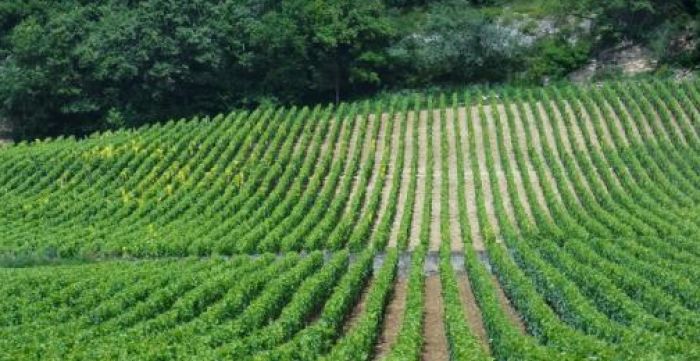
interview
02.12.2019
An Interview with Sylvie Esmonin from 2015
<p><em>This interview with Sylvie Esmonin took place in her <glossary title="254">cellar</glossary> in July, 2015.</em></p>
<p><strong>Can you introduce us to the estate?</strong><br />
<br />
When I was younger, I never thought I would be a <span class="zalup"><span><glossary title="1089">vigneronne</glossary><span>.</span></span></span> I was born in an era where only the sons took over an <span class="zalup"><span><glossary title="427">estate</glossary><span>,</span></span></span> and my father (who oh-so desperately wanted a boy) ended up with two daughters. So at first it seemed like there would not be a successor after my father. But as fate would have it, the <glossary title="427">estate</glossary> was destined to stay in the family. <br />
<br />
The Esmonin family can be traced back to when the Dukes of <glossary title="212">Burgundy</glossary> reigned. Our family was here before France was France! We were originally a noble family, but I don’t know if I really descend from them since I never bothered to verify my family tree. I did however do a little research and you only really find the Esmonin name in <span class="zalup"><span><glossary title="212">Burgundy</glossary><span>,</span></span></span> save a few in <span class="zalup"><span><glossary title="1180">Besançon</glossary><span>.</span></span></span> <br />
<br />
As far as immediate family that shaped the <span class="zalup"><span><glossary title="427">estate</glossary><span>,</span></span></span> my great-grandfather, who is originally from <span class="zalup"><span> <glossary title="1120">Vosne-Romanée</glossary><span>,</span></span></span> moved to <glossary title="489">Gevrey-Chambertin</glossary> to marry a <glossary title="1089">vigneronne</glossary> who lived here. Both were small producers with very little land, so they sold their grapes to larger <span class="zalup"><span><glossary title="427">estates</glossary><span>.</span></span></span> He worked for Comte de Moucheron, one of the most important <glossary title="210">Burgundian</glossary> land owners at the time. <br />
<br />
By combining their land, my great-grandparents were able to grow a bit, which in turn permitted them to buy more vines. My grandfather and grand-uncle eventually took over the <span class="zalup"><span><glossary title="427">estate</glossary><span>.</span></span></span> In the 1950’s, they were able able to purchase the<strong> </strong><glossary title="825">Clos Saint-Jacques</glossary> from the Comte de Moucheron. <br />
<br />
<strong>How did you decide you wanted to be a vigneronne?</strong><br />
<br />
It was not at all my original plan. I went to high school because my parents desired it of me. They wanted me to have a “good job” like my sister, who went to business school and currently has 1000 employees under her. That was a real success story for my parents!<br />
<br />
I wasn’t the dumbest person in the world, so going to school was relatively easy for me. I was rather lazy and behaved as a dilettante in my youth, but my parents kept pushing me until I found my way. After being bored to tears in high school, I fell in love with bio-chemistry. I was still lazy at the time though, so the idea of going to university, getting licensed and writing a thesis sounded like torture. So I decided to take engineering classes instead. Those classes got me accepted into an engineering school specializing in <glossary title="80">agronomy</glossary> and the food industry. <br />
<br />
I was still more interested in bio-chemistry than engineering, so I focused on working with food. This led to a number of internships at large industrial food companies, most notably Mars (<strong>ed note:</strong> producers of the candy bar of the same name, M&M’s and, weirdly, Whiskas cat food). It was very interesting and I learned a lot, but I very quickly realized that this path ultimately led to being trapped in a large corporation. I felt like a lion in a cage, and no matter how captivating I found the work, the idea of working for a company of this size became too much to bear. I’m not wired to spend 10 hours a day inside a box. <br />
<br />
So I shifted my energy to <span class="zalup"><span><glossary title="80">agronomy</glossary><span>,</span></span></span> and had an epiphany: what did I know the most about in that field? Obviously it was <span class="zalup"><span><glossary title="1103">viticulture</glossary><span>.</span></span></span> I was born in it, I spent my summers working in the vines and through my parents had been taught to understand and appreciate wine. So I began specializing in <span class="zalup"><span><glossary title="1103">viticulture</glossary><span>.</span></span></span> I actually remember my professor telling me: “I’m not worried about you, you’re going to end up back in <span class="zalup"><span><glossary title="489">Gevrey-Chambertin</glossary><span>.</span></span></span>” And I would always answer: “No way! I’ll never return to the family <span class="zalup"><span><glossary title="427">estate</glossary><span>!</span></span></span>” I was maybe 25 at the time. But, well, I’m clearly here now!<br />
<br />
<strong>So what happened? </strong><br />
<br />
I started working for other <span class="zalup"><span><glossary title="1089">vignerons</glossary><span>.</span></span></span> But the problem with working for someone is that you have to follow their philosophy and point of view. That philosophy is not necessarily yours. As I started to develop my own opinions, it seemed logical to go back to a family <glossary title="427">estate</glossary> that was waiting for me. <br />
<br />
<strong>Was your father still active at this point?</strong><br />
<br />
Yes. What happened was that I would often come home to see my parents on the weekend, and while I was there I would analyze the wines, taste and give my opinion. At one point I think my father kind of figured out: “Wow, she can do this!”<br />
<br />
So he asked me if I wanted to join him, at first proposing to do administrative work and sales. My father had always sold his juices to other <span class="zalup"><span><glossary title="427">estates</glossary><span>,</span></span></span> and from the very beginning I told him that if I were going to join the <span class="zalup"><span><glossary title="427">estate</glossary><span>,</span></span></span> we were going to go all the way and <glossary title="185">bottle</glossary> the wine from our land. So my father started <glossary title="185">bottling</glossary> his wine in 1987, and the first <glossary title="1109">vintage</glossary> of Michel Esmonin et Fille was in 1989. <br />
<br />
<strong>When did the transition to Domaine Sylvie Esmonin happen?</strong><br />
<br />
In 1998, when my father “officially” retired. I mean, he was retired but basically worked just as hard as when he wasn’t! Still to this day! But of course he is almost 80, so his workload has slowed down considerably. He’s on the tractor less, but he was in the vines <glossary title="834">pruning</glossary> with me all winter. It must be a family thing: my grandfather worked the vines until he was 90.<br />
<br />
<strong>What is the size of the estate at this point?</strong><br />
<br />
The <glossary title="427">estate</glossary> represents 7.8 <span class="zalup"><span><glossary title="523">hectares</glossary><span>.</span></span></span> We own half and rent half. 80 <glossary title="1208">ares</glossary> in <span class="zalup"><span><glossary title="1183">Bourgogne Rouge</glossary><span>,</span></span></span> 60 <glossary title="1208">ares</glossary> in <span class="zalup"><span><glossary title="370">Côtes-de-Nuits</glossary><span>.</span></span></span> 10 <glossary title="1208">ares</glossary> in <span class="zalup"><span><glossary title="188">Bourgogne Aligoté</glossary><span>,</span></span></span> 20 <glossary title="1208">ares</glossary> of <span class="zalup"><span><glossary title="1183">Bourgogne Blanc</glossary><span>,</span></span></span> 20 <glossary title="1208">ares</glossary> in <span class="zalup"><span><glossary title="1118">Volnay-Santenots</glossary><span>,</span></span></span> 1.7 <glossary title="523">hectares</glossary> of <glossary title="825">Clos-Saint-Jacques</glossary> (which we own) and 4.4 <glossary title="523">hectares</glossary> in <span class="zalup"><span><glossary title="489">Gevrey-Chambertin</glossary><span>.</span></span></span> <br />
<br />
<strong>How has your work in the vines and cellar evolved since your beginnings? </strong><br />
<br />
I don’t think it’s possible to be static in this line of work: you age, you meet people, you taste things and gain experience you didn’t always have. You become more of aware and sensitive to everything around you. <br />
<br />
In my beginnings, I was simply following in the footsteps of my father and grandfather, both of whom were alive at the time. What I quickly brought to the equation was the process of <glossary title="74">aging</glossary> and <glossary title="185">bottling</glossary> our wines, something they’d never done. But my goal was never to revolutionize the <span class="zalup"><span><glossary title="427">estate</glossary><span>.</span></span></span> However, I will say that a very important step forward was eliminating <glossary title="526">herbicides</glossary> in 1990. This naturally led to cutting out anti-rot <glossary title="">chemicals</glossary> and <span class="zalup"><span><glossary title="1142">pesticides</glossary><span>.</span></span></span> We focused instead on <glossary title="328">contact treatments,</glossary> and haven’t used <glossary title="1002">systemic products</glossary> in a very, very long time.<br />
<br />
<strong>Where did the inspiration to eliminate these products come from?</strong><br />
<br />
Because I drink my own wine! And I’d been involved in bio-chemistry for a long time, which naturally made me weary of chemical products. I don’t want to poison myself, I want to to drink something pure. And I also felt that I couldn’t play sorcerer’s apprentice with the vines.<br />
<br />
There is an anecdote I often tell from an early morning in 1990. I was in the vines with my father in September, maybe around 6 am. <glossary title="521">Harvest</glossary> was getting close, and we were simply observing the vines to decide where we were going to start picking. We get to a very rocky <span class="zalup"><span><glossary title="760">parcel</glossary><span>,</span></span></span> and I remember that morning was a bit misty from the humidity. While walking through the <span class="zalup"><span><glossary title="760">parcel</glossary><span>,</span></span></span> my father asks me: “Do you smell that?” I answered that yes, I could smell something peculiar.<br />
<br />
We had both instantly recognized the smell of <span class="zalup"><span><glossary title="877">Round Up</glossary><span>,</span></span></span> the infamous <glossary title="526">herbicide</glossary> that at the time was labelled as “ecologically safe”. I distinctly remember a TV commercial around that time with a dog burying his bone, the master treating the land with <glossary title="526">herbicide</glossary> and the dog happily extracting his bone on the clean, bare soil. This was on TV! And I also remember that it was explicitly noted that the traces of the product are very short lived after use. <br />
<br />
But here’s the catch: the last time we’d applied <glossary title="877">Round Up</glossary> was in July! To us, it was clear we were being lied to.<br />
<br />
<strong>Was your father in agreement with you about eliminating all these products?</strong><br />
<br />
My father was always reticent to modernism. He was late to the party with <glossary title="526">herbicides</glossary> (I think he started using them around 1976), and even then he used them very lightly. So he was with me in eliminating all the <glossary title="279">chemical products </glossary>in the vineyard when I proposed it to him. But the truth is that these products, at least from a manual labor perspective, make life a whole lot easier. I remember my father once saying: “Well, maybe we should buy just a little bit of <glossary title="526">herbicide</glossary> this year...” and I said NO!<br />
<br />
I just think he was worried that we wouldn’t be up to the task anymore. But no, I never looked back and we’ve been working this way ever since. <br />
<br />
<strong>Would you be eligible for organic certification if you wanted it?</strong><br />
<br />
I’ll explain to you why I’ve never requested a <span class="zalup"><span><glossary title="260">certification</glossary><span>.</span></span></span> In my beginnings I was very close to asking for it. At the time I was part of a tasting group called <em>Les Vins Authentiques </em>(Authentic Wines). There were quite a few <glossary title="260">certified organic</glossary> wines at these tastings, and I remember 9 out of 10 of them not tasting good to me. So that experience made me distance myself from <span class="zalup"><span><glossary title="746">organics</glossary><span>:</span></span></span> I didn’t want to be part of that family. <br />
<br />
To be fair, my point of view has obviously evolved over the years. As far as I’m concerned, I work my vines with my soul and conscience, and do what I think is best for them. So with this recent <glossary title="452">flavescence dorée</glossary> episode, I was forced to use an <glossary title="543">insecticide</glossary> for two years, though the one I used is <span class="zalup"><span><glossary title="260">certified organic</glossary><span>.</span></span></span> I didn’t hesitate, because if that’s what it takes to save my vines, I will do it. I refuse to be dogmatic and pig-headed about issues like this.<br />
<br />
If you know me, you know I am ecologically conscious. For the entire <span class="zalup"><span><glossary title="427">estate</glossary><span>,</span></span></span> I consolidate my garbage to send it out every two months. I divide everything up: cardboard, metals, glass, plastics; it’s just my way of doing things. Unfortunately, in France ecology is usually little more than paper work, not the actual work in the vines. There is a huge disconnect: I know growers who are <glossary title="260">certified organic</glossary> that I don’t consider respectful of nature. I’ve seen <glossary title="260">certified organic</glossary> producers <glossary title="507">green harvest</glossary> with tractors emitting hot gasses that burn off the leaves. If that’s considered <span class="zalup"><span><glossary title="746">organic</glossary><span>,</span></span></span> then no thanks!<br />
<br />
I believe there is a philosophy that goes beyond the products you do or don’t use in the soils. I <glossary title="507">green harvest</glossary> by <span class="zalup"><span><glossary title="520">hand</glossary><span>!</span></span></span> I hire people to do this with me!<br />
<br />
<strong>How about in the cellar? Any major evolutions or changes? </strong><br />
<br />
The biggest change is that my grandfather and father <glossary title="378">destemmed</glossary> the grapes. I’m not a mystical person (in fact I’m an atheist!), but there was something almost supernatural the first time I left the stems on the <span class="zalup"><span> <glossary title="1124">whole clusters</glossary><span>.</span></span></span> I’m a pragmatist that believes in what I touch and what I see, but I’ll never forget the bottle that changed my life: a 1911 Clos Vougeot. It was so fresh that it marked me for life. How could a wine travel through so many decades (it was about 90 years old at the time) and still taste this youthful?<br />
<br />
So I looked into it, and deduced that it had to be a <glossary title="254">cellar</glossary> choice and not vineyard work. Coincidentally, I went to taste wines at Romanée-Conti about a month after trying the Vougeot, and they happen to make <glossary title="1124">whole-cluster</glossary> <span class="zalup"><span><glossary title="1104">vinifications</glossary><span>.</span></span></span> So I tried it for myself, and I think you really gain more complexity, specifically floral aromas. This was lost in the cold <glossary title="236">carbonic macerations</glossary> of the 1980’s and early 1990’s: you could taste cassis, red fruit, blackberry fruit, maybe even a little spice but no flowers. The flowers in the vines weren't transported into the bottle.<br />
<br />
I’ve always loved reading old books about <glossary title="212">Burgundy's</glossary> history, and I remember many wine descriptors mentioning roses, violets... I thought to myself: these flowers are in our vineyards, so why can’t we taste them in our wines? The subtle way the flowers play with the fruit and the spice, now that’s a great wine!<br />
<br />
<strong>How do feel about the current state of Burgundy?</strong><br />
<br />
In the 26 years that I’ve been doing this, I feel that the job of the <glossary title="1089">vigneron</glossary> has drastically changed. Personally, I feel that <glossary title="">Burgundy</glossary> is bastardizing itself. We’re becoming more and more like the <span class="zalup"><span><glossary title="180">Bordelais</glossary><span>:</span></span></span> we want to everything to be “perfect”. But we are human and what is man other than a bunch of imperfections? Wines with “imperfections” also have more character, are more interesting and marvelous than the reassuring, in-the-box and “flawless” wines that to me are just sad. <br />
<br />
The other parallel I draw to <glossary title="">Bordeaux</glossary> is the fact that <glossary title="427">estates</glossary> are getting bigger and more disconnected with the land and even the very essence of being a <span class="zalup"><span><glossary title="1089">vigneron</glossary><span>.</span></span></span> You’ve got people hired to work the vines, people hired to work in the <span class="zalup"><span><glossary title="254">cellar</glossary><span>,</span></span></span> to sell the wines, etc... Where is the <glossary title="1089">vigneron</glossary> who knows how to do it all, and even if he isn’t the best in one task he makes up for it with another? In the end, he may not be perfect at every task, but the wine you taste will be unique for those very reasons! You’ll taste the <glossary title="1089">vigneron's</glossary> character in the wines.<br />
<br />
In brief: money ruins everything! <glossary title="427">Estates</glossary> like mine are an endangered species on the brink of extinction. <br />
<br />
<strong>What do you like to drink? </strong><br />
<br />
The first wine I think of when I’m drinking from other regions is Didier Dagueneau. I love his wines, I love how it seems light and airy but yet feels so rooted: a total contradiction that somehow makes total sense! <br />
<br />
In <glossary title="212">Burgundy</glossary> we have a ton of great <glossary title="1089">vignerons</glossary> and I love tasting my colleagues’s wines. I have a soft spot for Chambertin: I’ll even say I think they are the best wines in <span class="zalup"><span><glossary title="212">Burgundy</glossary><span>,</span></span></span> but in this regard I’ll admit I’m a total chauvinist! <br />
<br />
In a completely other style, I also really enjoy <span class="zalup"><span><glossary title="921">Sauternes</glossary><span>.</span></span></span> I like that it’s not a wine you open every day: it’s so rich that you can only taste a little bit of it at a time. It’s like having a <span class="zalup"><span><glossary title="313">cognac</glossary><span>,</span></span></span> you only need a tiny bit to get what its about. An Yquem from 2001 (my daughter’s birthday!) immediately comes to mind.</p>
Article
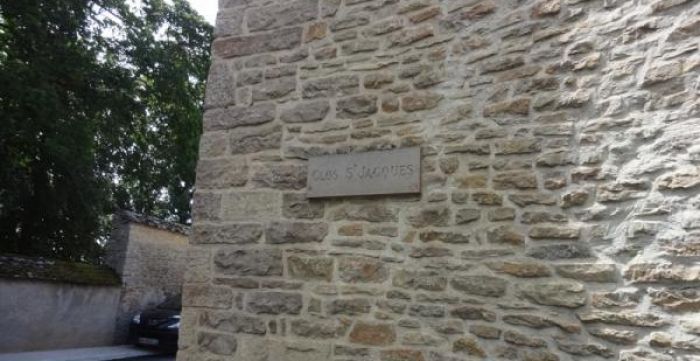
producer visit
21.08.2019
This visit with Sylvie Esmonin took place in June, 2012
<p><strong><em>This visit with Sylvie Esmonin took place in June, 2012.</em></strong></p>
<p><strong><em>Words by Jules Dressner, photos by Maya Perdersen.</em></strong></p>
<p>It's always a pleasant surprise when you imagine someone a certain way and they prove you completely wrong. Maybe it's because I'd only drank her wines a handful of times and that they strike me as "very serious" <glossary title="212">Burgundies</glossary> (they are, and that's a good thing), but I always imagined Sylvie Esmonin to be, well, somewhat elusive and very serious. I'm talking stern, never laughs at anything serious. But she turned out to be warm, friendly, funny, passionate and insightful. While I'd envisioned her greeting us in a fancy-schmantzy pantsuit, she showed directly from the vines up in her "work outfit" of boat-shoe loafers, purple soccer shorts, a t-shirt and a shiny, puffy silver-jacket that reminded of late 90's/early 2000's rap fashion. This description probably has you imagining Hillary Clinton dressed like Puff Daddy, but Sylvie actually looks like <a href="http://www.bbr.com/producer-1313-sylvie-esmonin" target="_blank">this</a>. <br />
<br />
Sylvie's most notorious vines are just outside of her house; she is one of only five to grow grapes on the <glossary title="824">1er Cru</glossary> <span class="zalup"><span><glossary title="825">Clos Saint-Jacques</glossary><span>.</span></span></span></p>
<p><img src="http://louisdressner.com/uploads/images/article/2019_Aug_21//71/a1/71a1e5b5afd75e8f8dbdebf7cfa86871.jpg" /></p>
<p><img src="http://louisdressner.com/uploads/images/article/2019_Aug_21//bf/fe/bffe03b1a9dd70957da43bbe7f533ca4.jpg" /></p>
<p><img src="http://louisdressner.com/uploads/images/article/2019_Aug_21//71/a1/71a1e5b5afd75e8f8dbdebf7cfa86871.jpg" /></p>
<p><img src="http://louisdressner.com/uploads/images/article/2019_Aug_21//0c/8e/0c8e08249df5193a67f22052b83cd047.jpg" /></p>
<p><img src="http://louisdressner.com/uploads/images/article/2019_Aug_21//16/67/1667be6299916b5b7504c4f0d37aebee.jpg" /></p>
<p>Here's a bonus pic of me petting Sylvie's dog Réglisse.</p>
<p><img src="http://louisdressner.com/uploads/images/article/2019_Aug_21//bd/0d/bd0da38e9f82ea8b3fcd220022aba203.jpg" /></p>
<p>Sylvie was, as aforementioned, a little late because she was coming directly from her vines, which are keeping her very busy this year. Undoubtedly due to the extra attention she is giving them in this challenging <span class="zalup"><span> <glossary title="1109">vintage</glossary><span>,</span></span></span> her eight <glossary title="523">hectares</glossary> are not suffering from any significant illness problems. Though it will be another very low <glossary title="1129">yielding</glossary> <span class="zalup"><span><glossary title="1109">vintage</glossary><span>,</span></span></span> quality should be high. <br />
<br />
<em>"It's been yet another very rainy summer, the 7th in the last 11 years. It rained 18 days in June! This is a fairly recent phenomenon in the region, one that people still haven't and need to adapt to." </em><br />
<br />
For Sylvie, the current effects of global warming worry her less than recent and significant shifts in climate, namely warmer, drier winters and rainier summers. In her father's days, if there wasn't some kind of catastrophic weather incident, every <glossary title="1109">vintage</glossary> tended to be more or less "by the books": seasonal temperature and snow/rain/sun conditions of course varied from year to year, but the <glossary title="1089">vigneron</glossary> was rarely thrown major curveballs. But Sylvie says that over the last decade, her job as a <span class="zalup"><span><glossary title="1089">vigneronne</glossary><span>,</span></span></span> which in her mind boils down to taking the best care of your vines as to produce the highest quality grapes (and thus the highest quality wine), has become an unpredictable, constant form of adaptation. <br />
<br />
To illustrate her point, she described her experience of the 2011 <span class="zalup"><span><glossary title="1109">vintage</glossary><span>.</span></span></span> That year, it was a very hot and dry spring, resulting in extremely precocious <glossary title="1166">budding</glossary> and <span class="zalup"><span><glossary title="1179">flowering</glossary><span>.</span></span></span> But after that, nothing grew, and the vines began stagnating due to the ongoing dryness. This led many <glossary title="1089">vignerons</glossary> to suffer from what Sylvie has coined <em>"</em>2003 syndrome<em>"</em>: that year, there had been no rain and heavy sun from March to October. In the summer, it is traditional to do an <glossary title="416">effeuillage</glossary> to separate the grapes from each other and air them out as to not spread illness. By routinely doing this in 2003, many <glossary title="1089">vignerons</glossary> completely burned their grapes in the process. So for 2011, the dryness made them panic, and imagining a 2003 repeat, everyone chose not to do an <span class="zalup"><span><glossary title="416">effeuillage</glossary><span>.</span></span></span> And lo and behold, it rained all of July and August! Of course, illness spread violently. Even worst, September was absurdly hot, and people found themselves having flash <glossary title="441">fermentations</glossary> (California style), which according to Sylvie, is terrible for <span class="zalup"><span><glossary title="805">Pinot Noir</glossary><span>.</span></span></span> All of Sylvie's neighbors thought she was crazy for instinctively doing an <glossary title="416">effeuillage</glossary> in 2011, but it would have been a disaster otherwise. <br />
<br />
After our chat, we stepped into Sylvie's beautiful, classicly <glossary title="210">Burgundian</glossary> <span class="zalup"><span><glossary title="254">cellar</glossary><span>.</span></span></span> It's spread out over a smaller room and a larger one:</p>
<p><img src="http://louisdressner.com/uploads/images/article/2019_Aug_21//a9/c5/a9c55a7eb33b9c27a311955635e4841e.jpg" /><br />
<img src="http://louisdressner.com/uploads/images/article/2019_Aug_21//31/55/3155f8d5f3adff665b2bc2b492510807.jpg" /></p>
<p>All the wines are <glossary title="441">fermented</glossary> and <glossary title="74">aged</glossary> in <span class="zalup"><span><glossary title="142">barrel</glossary><span>,</span></span></span> each clearly marked with <glossary title="363">cuvée</glossary> they contain.</p>
<p><img src="http://louisdressner.com/uploads/images/article/2019_Aug_21//1d/82/1d82ccfcbaf8ef1227e2d10bc19f2664.jpg" /></p>
<p><img src="http://louisdressner.com/uploads/images/article/2019_Aug_21//18/53/1853d6ccab2e5c01c6d69413bc3c234a.jpg" /></p>
<p>We got to taste all the 2011's from <span class="zalup"><span><glossary title="142">barrel</glossary><span>,</span></span></span> which will be <glossary title="185">bottled</glossary> right after easter 2013. The <glossary title="254">cellar</glossary> is naturally cool, but not <glossary title="1018">temperature controlled</glossary>; in such, a very slow <glossary title="441">fermentation</glossary> takes place, so Sylvie always waits two winters before <span class="zalup"><span><glossary title="185">bottling</glossary><span>.</span></span></span> We also tasted some 2010's in bottle. The wines always strike me as very drinkable young, but are invariably marked by <span class="zalup"><span><glossary title="731">oak</glossary><span>,</span></span></span> which I imagine would fade around the 10 year mark. Don't get me wrong: the <glossary title="731">oak</glossary> is noticeable but never overbearing, always feeling like a fully incorporated, integral part of the wine. <br />
<br />
After the tasting, Denyse asked how Sylvie's father Michel was doing. At 75, he still rides the tractor everyday to work the soils and take care of the vineyards.<br />
<br />
<em>"He's bored to tears retired at the house. He doesn't know what do to with himself besides work."</em><br />
<br />
Sylvie envies him; back in his day, a <glossary title="1089">vigneron's</glossary> job kept him in the vineyard and the <span class="zalup"><span><glossary title="254">cellar</glossary><span>,</span></span></span> which is where she wishes she could spend the majority of her time. But times have changed, and now she feels constantly bogged down by administrative and commercial duties. <br />
<br />
<em>"Sometimes I feel like I spend more time in the office than in the vines."</em><br />
<br />
Sylvie wishes she could hire somebody to take care of these duties, but in the reality of working a small, eigth <glossary title="523">hectare</glossary> <glossary title="427">estate</glossary> like hers, the administrative and commercial side of things have become an extension of an independent <glossary title="1089">vigneron's</glossary> duties. The real problem, however, is that the administrative laws in France for <glossary title="427">estates</glossary> producing wine are the same for everyone, regardless of size. What may seem trivial to a large installation who can hire someone to take care of paperwork becomes a time consuming endeavor that keeps the small, independent <glossary title="1089">vigneron</glossary> out of the vines where they belong. <br />
<br />
We also talked about the current state of <span class="zalup"><span><glossary title="212">Burgundy</glossary><span>,</span></span></span> which Sylvie has a hard time being optimistic about. <br />
<br />
<em>"</em><glossary title="212"><em>Burgundy</em></glossary><em> is becoming like </em><glossary title="178"><em>Bordeaux</em></glossary><em>... I've seen two of my colleagues (not my competitors!) in the village go out of business in 2012. They were both about my size; one was purchased by a rich Chinese couple, the other by wealthy Canadians. No one else can afford the land, and less people can afford the wine."</em><br />
<br />
Sylvie feels that <glossary title="212">Burgundy</glossary> has lost touch with its <glossary title="769">peasantry</glossary> roots, resulting in inflated egos and a loss of camaraderie that still existed a generation ago. <br />
<br />
<em>"The code of honor between </em><glossary title="1089"><em>vignerons</em></glossary><em> here is gone. In my father's days, if a neighbor accidentally broke one of your pillars with his tractor, he would call to tell you, then fix it. Now a guy doesn't call, and even though you see the fresh tractor marks going into his rows, he tells you it's not him."</em><br />
<br />
Sylvie's pessimism was tough to accept but based in reality, and I could tell her frustrations stemmed from a true passion and care for a sense of place; she knows that she will be able to continue working on a small, traditional scale in her lifetime, but worries her daughter might be thrown insurmountable economic and administrative hurdles if she chooses to continue in the same path. In the end, all Sylvie wants to do is make the best wines possible from her <span class="zalup"><span><glossary title="1026">terroir</glossary><span>,</span></span></span> and nothing else. While she's succeeding at just that, no one's making it any easier for her.</p>
Article

harvest report
03.12.2024
2024 Harvest Report from Sylvie Esmonin
<p>It's hard to muster the courage to talk about 2024. I know that vintages that end in "4" have a reputation for not being easy but this one really takes the cake. </p>
<p>I had the losing combination -if I can permit myself to use that term- of old vines and a selection of very fine plants (two elements that already lower yields) that I cultivate organically. 2024, with its cold and rainy Spring provoked coulure and mildew during flowering followed by a degradation of the grapes due to mildew. Depending on the parcel, we picked between 4 to 12 hl/ha. It's almost a 100% loss. </p>
<p>The conditions did not give us any desire to take pictures. Now we're waiting for 2025 because years that end in "5" tend to behave better.</p>
Article
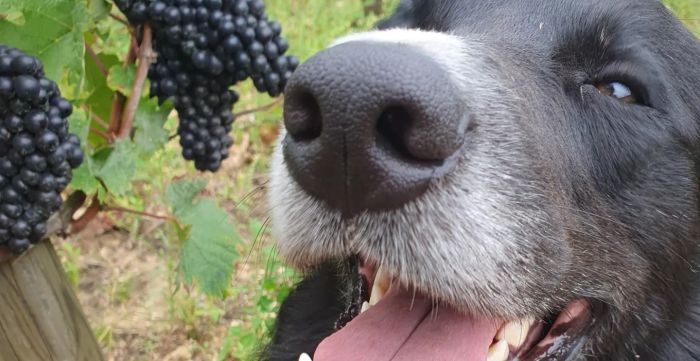
harvest report
02.01.2023
2023 Harvest Report from Sylvie Esmonin
<p>We started slowly with a small team of six/seven pickers on September 8th to <glossary term="Harvest" title="521">harvest</glossary> a few small parcels that had ripened earlier than the rest. Then the full team arrived on September 13th and we finished on the 21st. It was a much more abundant <glossary term="Harvest" title="521">harvest</glossary> than usual, with average <glossary term="Yield" title="1129">yields</glossary> at 45<glossary term="hl/ha" title="528">hl/h</glossary> between all the <span class="zalup"><span><glossary term="Appellation" title="113">appellations</glossary><span>.</span></span></span> As you can see in the photo below, the <glossary term="Cellar" title="254">cellar</glossary> is nice and full. </p>
<p>The sanitary state of the grapes was good, and we did have to watch out for a black and white predator, my dog Sirius (see below) who liked to snack on them. The wine is more subtle and light than the past few <glossary term="Vintage" title="1109">vintages</glossary> but the <glossary term="Cuvée" title="363">cuvées</glossary> meant for <glossary term="Cellaring" title="255">cellaring</glossary> will remain so as they are fuller body than the rest of the wines. </p>
<p><img src="https://louisdressner.com/uploads/images/article//984/31/8a/318aa22085198517a4d9644b396ac5d7.jpg" /><img src="https://louisdressner.com/uploads/images/article//984/c2/38/c238a488f7ccb8d90e84f9fc586fde08.jpg" /><img src="https://louisdressner.com/uploads/images/article//984/04/ec/04ec7d203850c6153a81375a8887fddb.jpg" /><img src="https://louisdressner.com/uploads/images/article//984/a9/f1/a9f17f03015943378d58e0c6b601debe.jpg" /><img src="https://louisdressner.com/uploads/images/article//984/55/7c/557c2b47bffadbb8ba83391f90351990.jpg" /></p>
Article
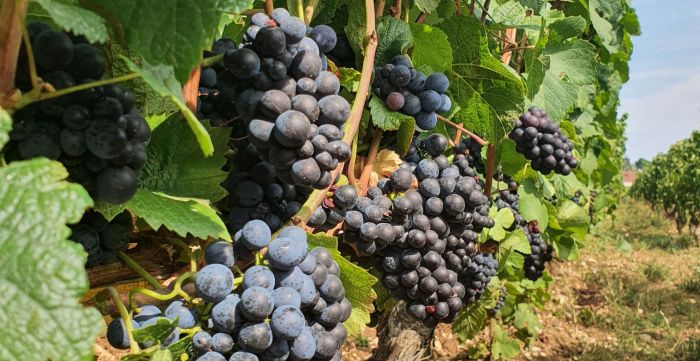
harvest report
23.12.2022
2022 Harvest Report from Sylvie Esmonin
<p>In 2022, we <glossary term="Harvest" title="521">harvested</glossary> from September 1st to the 10th. The weather was nice during this period (less than 4mm of rain), as was the sanitary state of the grapes. What we <glossary term="Harvest" title="521">harvested</glossary> has a sufficient <glossary term="Maturation" title="639">maturity</glossary> to not have to <glossary term="Chaptalisation" title="270">chaptalize</glossary> the majority of the <glossary term="Cuvée" title="363">cuvées</glossary> (some wines I did add 0.5 degrees to). </p>
<p>We averaged 35<glossary term="hl/ha" title="528">hl/ha</glossary> in <span class="zalup"><span><glossary term="Gevrey-Chambertin" title="489">Gevrey-Chambertin</glossary><span>,</span></span></span> 45<glossary term="hl/ha" title="528">hl/ha</glossary> in the <glossary term="Côte de Nuits" title="370">Côte de Nuits Villages</glossary> and <span class="zalup"><span><glossary term="Bourgogne Blanc/Rouge" title="1183">Bourgogne Rouge</glossary><span>,</span></span></span> 25<glossary term="hl/ha" title="528">hl/ha</glossary> in <span class="zalup"><span><glossary term="Clos Saint-Jacques" title="825">Clos Saint-Jacques</glossary><span>.</span></span></span> In other words, a lot more than 2021... and thank goodness for that. </p>
<p><img src="https://louisdressner.com/uploads/images/article//951/0a/d5/0ad527e7a56d1bd84f2e212ce1708635.jpg" /><img src="https://louisdressner.com/uploads/images/article//951/46/cf/46cf3bde1fe7f260853c51d7f6339abf.jpg" /></p>
Article
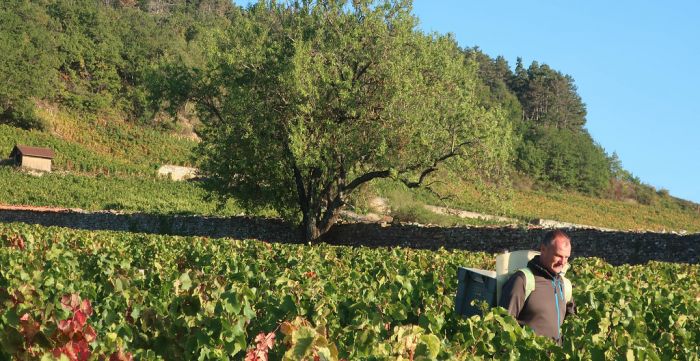
harvest report
06.10.2019
2019 Harvest Report from Sylvie Esmonin
<div style="text-align:start; -webkit-text-stroke-width:0px">
<div style="text-align:start; -webkit-text-stroke-width:0px">What to say about a <glossary term="Vintage" title="1109">vintage</glossary> ending in 9.</div>
<div style="text-align:start; -webkit-text-stroke-width:0px"> </div>
<div style="text-align:start; -webkit-text-stroke-width:0px">Small quantities but balanced and ripe with nice <span class="zalup"><span><glossary term="Acidity" title="71">acidites</glossary><span>.</span></span></span>..</div>
<div style="text-align:start; -webkit-text-stroke-width:0px"> </div>
<div style="text-align:start; -webkit-text-stroke-width:0px">Sylvie,</div>
</div>
<div style="text-align:start; -webkit-text-stroke-width:0px"> </div>
<div style="text-align:start; -webkit-text-stroke-width:0px"><img src="http://louisdressner.com/uploads/images/article/2020_Oct_06//62/83/62831f0fc7809787bade8ff5b42566f6.jpg" /><img src="http://louisdressner.com/uploads/images/article/2020_Oct_06//47/fa/47fa1e79c2c288506bbacdaa19863668.jpg" /><img src="http://louisdressner.com/uploads/images/article/2020_Oct_06//0b/23/0b23f80c6f7596a19361eb5eac6737bb.jpg" /><img src="http://louisdressner.com/uploads/images/article/2020_Oct_06//45/bd/45bd2c3afe8f484edbf08cac47e419f7.jpg" /><img src="http://louisdressner.com/uploads/images/article/2020_Oct_06//72/fb/72fb5ac0cef00f535436ab68068b3bfd.jpg" /></div>
Article
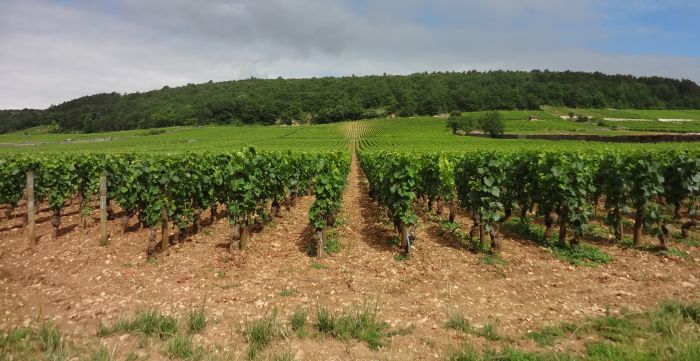
harvest report
06.10.2008
2008 Harvest Report from Sylvie Esmonin
<p><u><strong>October 6th, 2008:</strong></u></p>
<p>A miracle! We managed to complete the <glossary title="521">harvest</glossary> without a day of rain even though the weather forecasts had predicted lots of it, particularly for Thursday October 2nd. As it turned out, it was a beautiful sunny day, one of the nicest of the <span class="zalup"><span><glossary title="521">harvest</glossary><span>.</span></span></span><br />
<br />
We started on September 27th and finished on October 2nd at noon. All the grapes are in the <span class="zalup"><span><glossary title="254">cellar</glossary><span>.</span></span></span> The ripeness is good, around 12% on average. Now all that’s left is the <span class="zalup"><span><glossary title="441">fermentation</glossary><span>.</span></span></span><br />
<br />
P.S. The grapes were healthy but we had to do some <glossary title="1380">sorting</glossary> due to rot.</p>
Article

harvest report
26.09.2005
2005 Harvest Report from Sylvie Esmonin
<p><u><strong>September 15th, 2005:</strong></u></p>
<p>The first little green <glossary title="206">buds</glossary> appeared around the middle of April 2005: 10 to 12 days ahead of 2004.<br />
<br />
The very first flowers appeared on May 30, 2005 and the <glossary title="1179">flowering</glossary> phase in general started in early June, still 10 to 12 days in advance of last year.<br />
<br />
There was no significant rain from June until the second week of September with only 5mm in August. Because our vines have such deep roots (thanks to frequent work), they did not suffer from the lack of rain.<br />
<br />
No problems with diseases - perfect health.<br />
<br />
Six days before the <glossary title="521">harvest</glossary> -- The grapes are ripening slowly (degrees of potential alcohol between 12.5 % and 13%) and they are still in perfect health. The <glossary title="1129">yields</glossary> look fairly average with small <span class="zalup"><span><glossary title="1138">bunches</glossary><span>.</span></span></span> The stems are already ripe and drying.<br />
<br />
It looks like the <glossary title="805">Pinot Noir</glossary> grapes may have great color, the level of anthocyanes being very high. <glossary title="71">Acidity</glossary> has been kept fairly high by a cool month of August.<br />
<br />
So everything looks right for a great <span class="zalup"><span><glossary title="1109">vintage</glossary><span>,</span></span></span> all that’s left is the weather. We are keeping our fingers crossed that there won’t be any rain.<br />
<br />
A new, 50<glossary title="524">hl</glossary> <glossary title="1126">wooden</glossary> <glossary title="1140">vat</glossary> arrived today, the fourth in my <span class="zalup"><span><glossary title="254">cellar</glossary><span>.</span></span></span></p>
<p><u><strong>September 26, 2005:</strong></u></p>
<p>We started <glossary title="521">harvesting</glossary> the <glossary title="368">Côte de Beaune</glossary> on September 22nd and the <glossary title="370">Côtes de Nuits</glossary> on the 23rd.<br />
<br />
Right up to today, the weather has been beautiful with no rain. The grapes are ripe with thick skins and are in perfect health.<br />
<br />
My lowest degree of potential alcohol is 12.6% for the <glossary title="1183">Bourgogne Rouge</glossary> (which will eventually end up as 12.1% for the finished wine). The <glossary title="1183">Bourgogne Blanc</glossary> will be 12.3% when it is finished. After that, the lowest of the <glossary title="489">Gevrey-Chambertins</glossary> is at 12.8% and another at 12.9%. The <glossary title="489">Gevrey-Chambertin</glossary> <glossary title="740">Vieilles Vignes</glossary> <glossary title="363">cuvée</glossary> is at 13.95% and the <glossary title="1118">Volnay</glossary> at 13.5%. We are picking the <glossary title="825">Clos St. Jacques</glossary> today. Everything is going very well except that one of our pickers cut her finger instead of a grape….<br />
<br />
The end of <glossary title="521">harvest</glossary> is scheduled for Friday, September 30th.</p>
Article
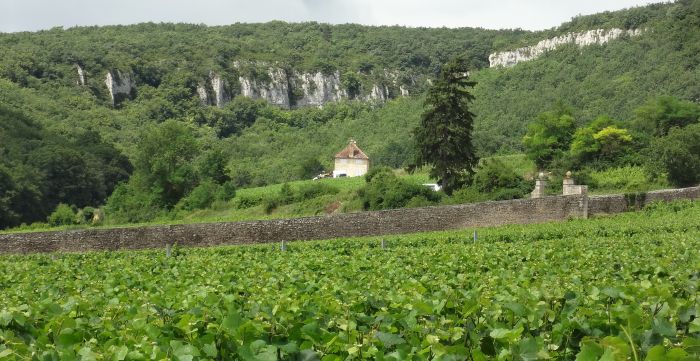
harvest report
02.10.2004
2004 Harvest Report from Sylvie Esmonin
<p><u><strong>October 2nd, 2004:</strong></u></p>
<p>After a very difficult August, the month of September did its job in style, indeed, in great style.<br />
<br />
With small <glossary title="1129">yields</glossary> (thanks to a <glossary title="507">green harvest</glossary> at the end of July), September provided perfect conditions for the grapes to reach an exceptional level of ripeness.<br />
<br />
All the <glossary title="363">cuvées</glossary> harvested thus far have degrees of potential alcohol between 12.5% and 13.8%.<br />
<br />
We are in the middle of <glossary title="521">harvesting</glossary> the <strong><glossary title="825">Clos-Saint-Jacques</glossary></strong> right now. We will know more tomorrow.<br />
<br />
The sugar levels are where they should be and that’s saying a lot.<br />
<br />
The <glossary title="71">acidity</glossary> levels are between 5.8 and 6.2 grams/liter and the <glossary title="783">PH</glossary> levels are between 3.1 and 3.30.<br />
<br />
Unexpected and comforting….now, all that’s left is <glossary title="1104">vinification</glossary> to see how the quality of the <glossary title="1010">tannins</glossary> turns out.<br />
<br />
But I’m HAPPY.</p>
Article












